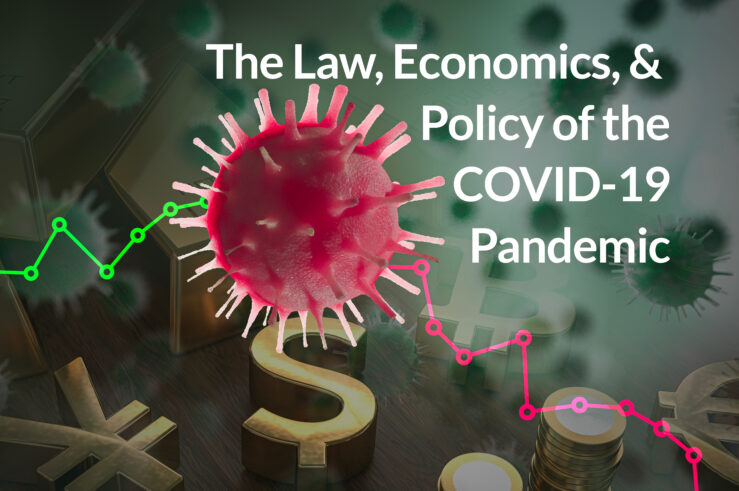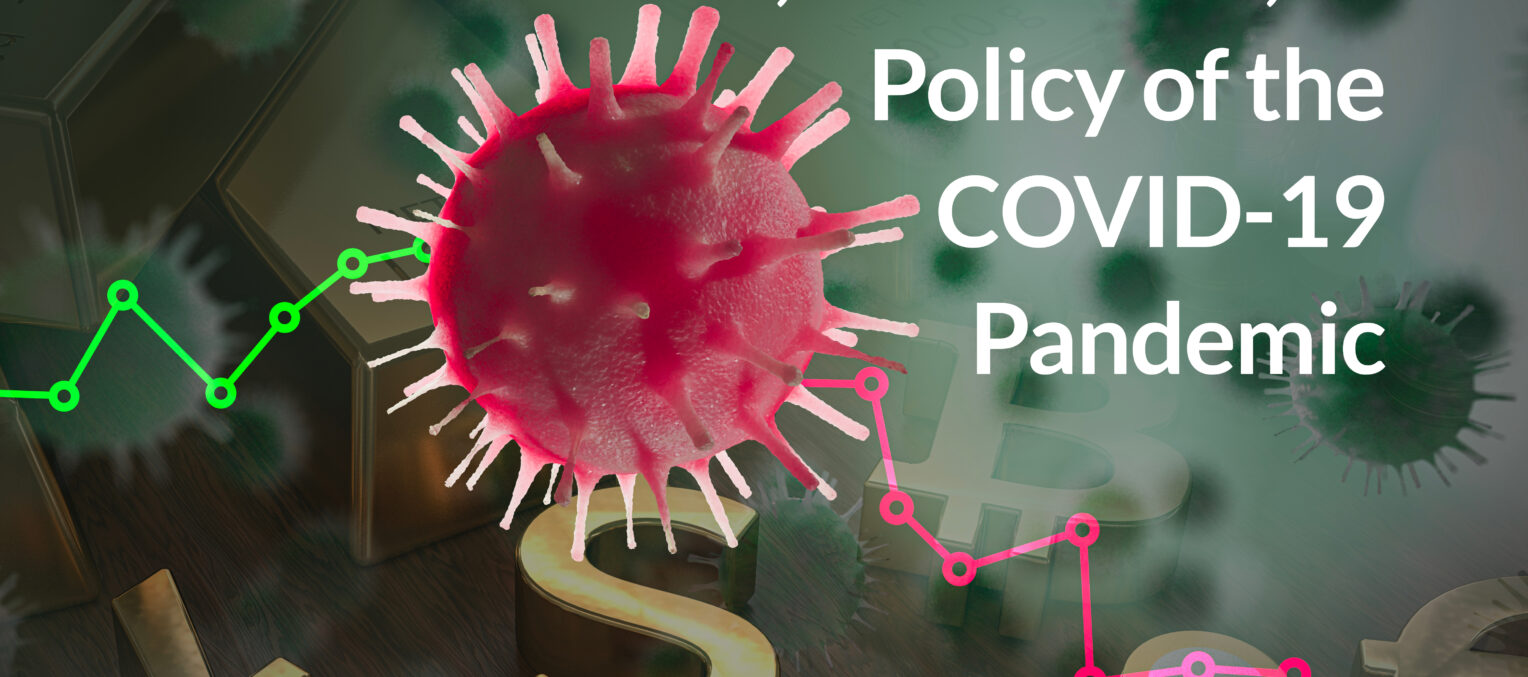
This article is a part of the The Law, Economics, and Policy of the COVID-19 Pandemic symposium.

The COVID-19 pandemic is changing the way consumers shop and the way businesses sell. These shifts in behavior, designed to “flatten the curve” of infection through social distancing, are happening across many (if not all) markets. But in many cases, it’s impossible to know now whether these new habits are actually achieving the desired effect.
Take a seemingly silly example from Oregon. The state is one of only two in the U.S. that prohibits self-serve gas. In response to COVID-19, the state fire marshall announced it would temporarily suspend its enforcement of the prohibition. Public opinion fell into two broad groups. Those who want the option to pump their own gas argue that self-serve reduces the interaction between station attendants and consumers, thereby potentially reducing the spread of coronavirus. On the other hand, those who support the prohibition on self-serve have blasted the fire marshall’s announcement, arguing that all those dirty fingers pressing keypads and all those grubby hands on fuel pumps will likely increase the spread of the virus.
Both groups may be right, but no one yet knows the net effect. We can only speculate. This picture becomes even more complex when considering other, alternative policies. For instance, would it be more effective for the state of Oregon to curtail gas station visits by forcing the closure of stations? Probably not. Would it be more effective to reduce visits through some form of rationing? Maybe. Maybe not.
Policymakers will certainly struggle to efficiently decide how firms and consumers should minimize the spread of COVID-19. That struggle is an extension of Hayek’s knowledge problem: policymakers don’t have adequate knowledge of alternatives, preferences, and the associated risks.
A Hayekian approach — relying on bottom-up rather than top-down solutions to the problem — may be the most appropriate solution. Allowing firms to experiment and iteratively find solutions that work for their consumers and employees (potentially adjusting prices and wages in the process) may be the best that policymakers can do.
The case of online retail platforms
One area where these complex tradeoffs are particularly acute is that of online retail. In response to the pandemic, many firms have significantly boosted their online retail capacity.
These initiatives have been met with a mix of enthusiasm and disapproval. On the one hand online retail enables consumers to purchase “essential” goods with a significantly reduced risk of COVID-19 contamination. It also allows “non-essential” goods to be sold, despite the closure of their brick and mortar stores. At first blush, this seems like a win-win situation for both consumers and retailers of all sizes, with large retailers ramping up their online operations and independent retailers switching to online platforms such as Amazon.
But there is a potential downside. Even contactless deliveries do present some danger, notably for warehouse workers who run the risk of being infected and subsequently passing the virus on to others. This risk is amplified by the fact that many major retailers, including Walmart, Kroger, CVS, and Albertsons, are hiring more warehouse and delivery workers to meet an increase in online orders.
This has led some to question whether sales of “non-essential” goods (though the term is almost impossible to define) should be halted. The reasoning is that continuing to supply such goods needlessly puts lives at risk and reduces overall efforts to slow the virus.
Once again, these are incredibly complex questions. It is hard to gauge the overall risk of infection that is produced by the online retail industry’s warehousing and distribution infrastructure. In particular, it is not clear how effective social distancing policies, widely imposed within these workplaces, will be at achieving distancing and, in turn, reducing infections.
More fundamentally, whatever this risk turns out to be, it is almost impossible to weigh it against an appropriate counterfactual.
Online retail is not the only area where this complex tradeoff arises. An analogous reasoning could, for instance, also be applied to food delivery platforms. Ordering a meal on UberEats does carry some risk, but so does repeated trips to the grocery store. And there are legitimate concerns about the safety of food handlers working in close proximity to each other. These considerations make it hard for policymakers to strike the appropriate balance.
The good news: at least some COVID-related risks are being internalized
But there is also some good news. Firms, consumers and employees all have some incentive to mitigate these risks.
Consumers want to purchase goods without getting contaminated; employees want to work in safe environments; and firms need to attract both consumers and employees, while minimizing potential liability. These (partially) aligned incentives will almost certainly cause these economic agents to take at least some steps that mitigate the spread of COVID-19. This might notably explain why many firms imposed social distancing measures well before governments started to take notice (here, here, and here).
For example, one first-order effect of COVID-19 is that it has become more expensive for firms to hire warehouse workers. Not only have firms moved up along the supply curve (by hiring more workers), but the curve itself has likely shifted upwards reflecting the increased opportunity cost of warehouse work. Predictably, this has resulted in higher wages for workers. For example, Amazon and Walmart recently increased the wages they were paying warehouse workers, as have brick and mortar retailers, such as Kroger, who have implemented similar policies.
Along similar lines, firms and employees will predictably bargain — through various channels — over the appropriate level of protection for those workers who must continue to work in-person.
For example, some companies have found ways to reduce risk while continuing operations:
- CNBC reports Tyson Foods is using walk-through infrared body temperature scanners to check employees’ temperatures as they enter three of the company’s meat processing plants. Other companies planning to use scanners include Goldman Sachs, UPS, Ford, and Carnival Cruise Lines.
- Kroger’s Fred Meyer chain of supermarkets is limiting the number of customers in each of its stores to half the occupancy allowed under international building codes. Kroger will use infrared sensors and predictive analytics to monitor the new capacity limits. The company already uses the technology to estimate how many checkout lanes are needed at any given time.
- Trader Joe’s limits occupancy in its store. Customers waiting to enter are asked to stand six feet apart using marked off Trader Joe’s logos on the sidewalk. Shopping carts are separated into groups of “sanitized” and “to be cleaned.” Each cart is thoroughly sprayed with disinfectant and wiped down with a clean cloth.
In other cases, bargaining over the right level of risk-mitigation has been pursued through more coercive channels, such as litigation and lobbying:
- A recently filed lawsuit alleges that managers at an Illinois Walmart store failed to alert workers after several employees began showing symptoms of COVID-19. The suit claims Walmart “had a duty to exercise reasonable care in keeping the store in a safe and healthy environment and, in particular, to protect employees, customers and other individuals within the store from contracting COVID-19 when it knew or should have known that individuals at the store were at a very high risk of infection and exposure.”
- According to CNBC, a group of legislators, unions and Amazon employees in New York wrote a letter to CEO Jeff Bezos calling on him to enact greater protections for warehouse employees who continue to work during the coronavirus outbreak. The Financial Times reports worker protests at Amazon warehouse in the US, France, and Italy. Worker protests have been reported at a Barnes & Noble warehouse. Several McDonald’s locations have been hit with strikes.
- In many cases, worker concerns about health and safety have been conflated with long-simmering issues of unionization, minimum wage, flexible scheduling, and paid time-off. For example, several McDonald’s strikes were reported to have been organized by “Fight for $15.”
Sometimes, there is simply no mutually-advantageous solution. And businesses are thus left with no other option than temporarily suspending their activities:
- For instance, McDonalds and Burger King have spontaneously closed their restaurants — including drive-thru and deliveries — in many European countries (here and here).
- In Portland, Oregon, ChefStable a restaurant group behind some of the city’s best-known restaurants, closed all 20 of its bars and restaurants for at least four weeks. In what he called a “crisis of conscience,” owner Kurt Huffman concluded it would be impossible to maintain safe social distancing for customers and staff.
This is certainly not to say that all is perfect. Employers, employees and consumers may have very strong disagreements about what constitutes the appropriate level of risk mitigation.
Moreover, the questions of balancing worker health and safety with that of consumers become all the more complex when we recognize that consumers and businesses are operating in a dynamic environment, making sometimes fundamental changes to reduce risk at many levels of the supply chain.
Likewise, not all businesses will be able to implement measures that mitigate the risk of COVID-19. For instance, “Big Business” might be in a better position to reduce risks to its workforce than smaller businesses.
Larger firms tend to have the resources and economies of scale to make capital investments in temperature scanners or sensors. They have larger workforces where employees can, say, shift from stocking shelves to sanitizing shopping carts. Several large employers, including Amazon, Kroger, and CVS have offered higher wages to employees who are more likely to be exposed to the coronavirus. Smaller firms are less likely to have the resources to offer such wage premiums.
For example, Amazon recently announced that it would implement mandatory temperature checks, that it would provide employees with protective equipment, and that it would increase the frequency and intensity of cleaning for all its sites. And, as already mentioned above, Tyson Foods announced that they would install temperature scanners at a number of sites. It is not clear whether smaller businesses are in a position to implement similar measures.
That’s not to say that small businesses can’t adjust. It’s just more difficult. For example, a small paint-your-own ceramics shop, Mimosa Studios, had to stop offering painting parties because of government mandated social distancing. One way it’s mitigating the loss of business is with a paint-at-home package. Customers place an order online, and the studio delivers the ceramic piece, paints, and loaner brushes. When the customer is finished painting, Mimosa picks up the piece, fires it, and delivers the finished product. The approach doesn’t solve the problem, but it helps mitigate the losses.
Conclusion
In all likelihood, we can’t actually avoid all bad outcomes. There is, of course, some risk associated with even well-resourced large businesses continuing to operate, even though some of them play a crucial role in coronavirus-related lockdowns.
Currently, market actors are working within the broad outlines of lockdowns deemed necessary by policymakers. Given the intensely complicated risk calculation necessary to determine if any given individual truly needs an “essential” (or even a “nonessential”) good or service, the best thing that lawmakers can do for now is let properly motivated private actors continue to seek optimal outcomes together within the imposed constraints.
So far, most individuals and the firms serving them are at least partially internalizing Covid-related risks. The right approach for lawmakers would be to watch this process and determine where it breaks down. Measures targeted to fix those breaches will almost inevitably outperform interventionist planning to determine exactly what is essential, what is nonessential, and who should be allowed to serve consumers in their time of need.






